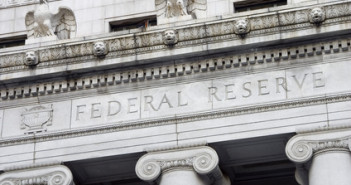Ben Bernanke and his associates at the FOM decided not to introduce new policy measures. Even a verbal stimulus measure of lengthening the pledge keep interest rates low wasn’t changed.
The dollar is on the rise. EUR/USD traded steadily around 1.23 before the release and is now at 1.2265 after hitting 1.2243. Â USD/JPY was sliding towards 78 and is now moving back up at 78.25.
Update: Â The dollar is on the rise across the board, with losses suffered in AUD, CAD, NZD, GBP, and CHF, which is effectively pegged to the euro. This move puts a bit more pressure on the Swiss central bank.
The committee did note a slowdown in the economy:
… economic activity decelerated somewhat over the first half of this year. Growth in employment has been slow in recent months, and the unemployment rate remains elevated. Business fixed investment has continued to advance. Household spending has been rising at a somewhat slower pace than earlier in the year. Despite some further signs of improvement, the housing sector remains depressed.
More from the announcement:
- Needless to say, the interest rate remained at the lows of 0-0.25%, as did the guidance towards further moves. The extension of “Operation Twistâ€, announced in the previous meeting, will continue as planned until the end of the year.
- The regular “open door†for more action remained, with the wording “…provide additional accommodation as needed…†– this is the hope that those wishing for QE3 can hang onto. However, this wording didn’t really change, and QE2 ended 13 months ago, at the end of June 2011.
- And as usual again, one member dissented:Â Jeffrey M. Lacker. He wanted to omit the conditional pledge about keeping interest rates low.
All in all: no changes – good news to dollar bulls.
Among the four scenarios discussed towards the rate decision, the two leading ones were either subtle hints about QE3 in the next meeting, or an extension of the pledge to keep rates low beyond the current pledge of “late 2014â€. Also doing nothing wasn’t ruled out.
Contrary to previous rate decisions, this one isn’t as closely watched as previous ones. This is due to the heightened expectations from the euro-zone rate decision due tomorrow at 11:45 GMT, with Draghi’s press conference at 12:30 GMT.
And contrary to the Fed, the ECB has many more bullets to tackle a much worse crisis. However, there are reasons to fear that Draghi will disappoint.



